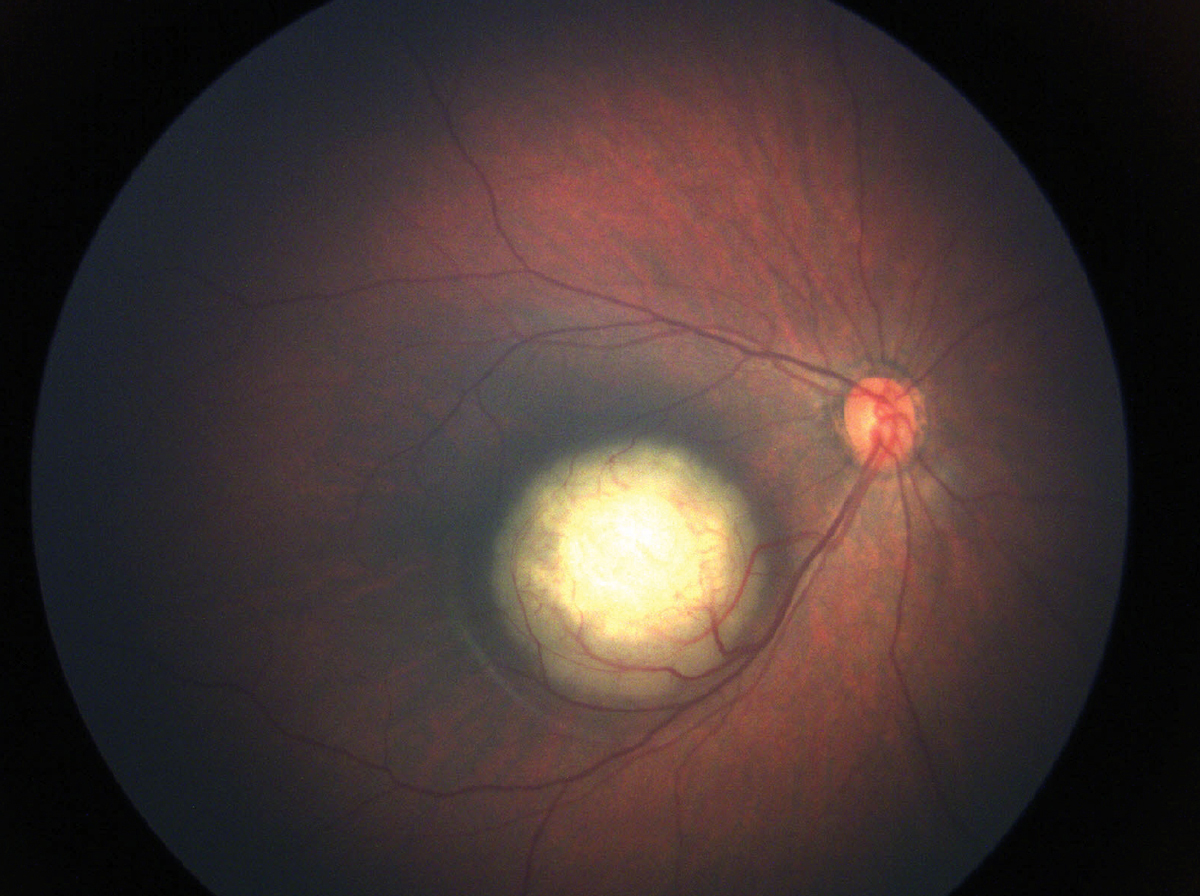 |
| Children residing in neighborhoods with particularly low educational opportunity had higher odds of presenting with retinoblastoma stages D and E than those residing in neighborhoods with higher opportunity scores. Photo: Julia Canestraro, OD. Click image to enlarge. |
Neighborhood resources play an essential role in access to preventative vision care and eye specialty care, as both factors can influence the timing of diagnosis. The Child Opportunity Index (COI) is a novel metric that synthesizes 29 neighborhood characteristics that contribute to the health and well-being of young kids. Researchers from Boston Children’s Hospital at Harvard Medical School evaluated the association of neighborhood opportunity with the severity of retinoblastoma at presentation. Their findings, which were recently published in American Journal of Ophthalmology, demonstrated that children residing in neighborhoods with low overall and socioeconomic COI scores were at increased odds of presenting with advanced retinoblastoma (ICRB Group D or E, the two most severe) at the initial ophthalmic examination. The team believes that this late-stage detection of retinoblastoma among children residing in low-opportunity neighborhoods may reflect barriers to preventive vision care and access to specialty care.
What is the COI?This new index synthesizes 29 neighborhood characteristics that collectively contribute to a child’s physical and emotional well-being. According to diversitydatakids.org, the Child Opportunity Index “measures and maps the quality of resources and conditions (e.g., good early childhood education centers and schools, green spaces, access to healthy food, low poverty) that matter for children to develop in a healthy way in the neighborhoods where they live.” It comprises a wide range of factors in three domains: education, health and environment, and social and economic. The full index can be found here and rankings of the lowest and highest neighborhoods in the US are presented here. |
This study included 125 children (51.2% male). Median age at diagnosis was 13 months. The cohort included 57 white patients, 12 Black patients, 26 Hispanic patients, six children with another race or ethnicity and 24 with unknown race and ethnicity. The type of medical insurance was public for 34.4% of patients, private for 59.2% of patients and unknown for 6.4%. In terms of COI scores, 10.4% resided in very low opportunity neighborhoods, 16.0% in low opportunity areas, 12.8% in moderate opportunity areas, 26.4% in high opportunity neighborhoods and 34.4% in very high opportunity neighborhoods.
The study found that 87.2% of children presented with Group D or E retinoblastoma. Children residing in neighborhoods with low overall COI scores (odds ratio; OR: 1.62) and low education COI scores (OR: 1.77) were at increased odds of presenting with ICRB Group D or E retinoblastoma after adjusting for individual-level socioeconomic factors.
“Our findings emphasize the need for further investigation into the role of the specific neighborhood characteristics contributing to increased diagnostic lag time in children with retinoblastoma,” the authors wrote in their paper.
The researchers suggested that multiple factors likely contribute to this relationship. Families residing in low opportunity neighborhoods may have fewer opportunities to access preventative care such as vision screening or may have decreased access to educational resources on the signs and symptoms that require care from a physician, particularly those relevant for caregivers with low educational attainment, a factor encompassed in the education domain.
They believe that the COI provides an example of “neighborhood-level indices that may provide opportunities to identify children at increased risk of delayed presentation to care and to develop strategies to reduce disparities in clinical outcomes.”
Altamirano-Lamarque F, Lim C, Shah AS, et al. Association of neighborhood opportunity with severity of retinoblastoma at presentation. Am J Ophthalmol. January 15, 2024. [Epub ahead of print]. |

